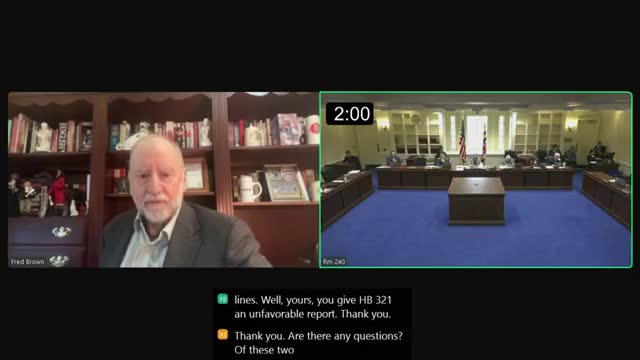Maryland lawmakers confront $7 billion markups by PBMs on critical specialty drugs
January 23, 2025 | Health and Government Operations Committee, HOUSE OF REPRESENTATIVES, Committees, Legislative, Maryland
This article was created by AI summarizing key points discussed. AI makes mistakes, so for full details and context, please refer to the video of the full meeting. Please report any errors so we can fix them. Report an error »

In a recent session of the Maryland House Health and Government Operations (HGO) Committee, a heated discussion unfolded regarding the rising costs of prescription drugs and the role of Pharmacy Benefit Managers (PBMs). The meeting, held on January 23, 2025, spotlighted a troubling report from the Federal Trade Commission (FTC) that revealed PBMs charged excessive markups on critical specialty drugs, including those used to treat cancer and HIV, amounting to over $7 billion in profits.
Delegate Kipke, a vocal advocate for reform, expressed deep concern over the financial burden placed on constituents who often face the difficult choice between purchasing medication and affording basic necessities like food. He urged committee members to collaborate with bill sponsors to address the issues highlighted in the FTC report, emphasizing the need for transparency and fairness in drug pricing.
The committee also heard from representatives of the Maryland Pharmacists Association, who highlighted the alarming trend of pharmacy closures in the state. Over the past two years, Maryland has seen a 2% decrease in pharmacies, which poses a significant challenge for patients seeking access to medications. Executive Director Aliyah Horton pointed out that while the number of pharmacies dwindles, the demand for their services continues to grow.
As discussions progressed, concerns were raised about the potential legal implications of the proposed legislation, particularly regarding its impact on organized labor and ERISA protections. Mr. Brown, representing labor interests, noted ongoing litigation in other states that could influence the outcome of similar reforms in Maryland.
The committee concluded the session with a call for collaboration among stakeholders to refine the proposed legislation. The urgency of the matter was palpable, as members recognized the pressing need to ensure that patients receive the medications they need at prices they can afford. As the meeting adjourned, the path forward remained uncertain, but the commitment to finding a solution was clear. The implications of this discussion will likely resonate throughout the state as lawmakers continue to grapple with the complexities of healthcare reform.
Delegate Kipke, a vocal advocate for reform, expressed deep concern over the financial burden placed on constituents who often face the difficult choice between purchasing medication and affording basic necessities like food. He urged committee members to collaborate with bill sponsors to address the issues highlighted in the FTC report, emphasizing the need for transparency and fairness in drug pricing.
The committee also heard from representatives of the Maryland Pharmacists Association, who highlighted the alarming trend of pharmacy closures in the state. Over the past two years, Maryland has seen a 2% decrease in pharmacies, which poses a significant challenge for patients seeking access to medications. Executive Director Aliyah Horton pointed out that while the number of pharmacies dwindles, the demand for their services continues to grow.
As discussions progressed, concerns were raised about the potential legal implications of the proposed legislation, particularly regarding its impact on organized labor and ERISA protections. Mr. Brown, representing labor interests, noted ongoing litigation in other states that could influence the outcome of similar reforms in Maryland.
The committee concluded the session with a call for collaboration among stakeholders to refine the proposed legislation. The urgency of the matter was palpable, as members recognized the pressing need to ensure that patients receive the medications they need at prices they can afford. As the meeting adjourned, the path forward remained uncertain, but the commitment to finding a solution was clear. The implications of this discussion will likely resonate throughout the state as lawmakers continue to grapple with the complexities of healthcare reform.
View full meeting
This article is based on a recent meeting—watch the full video and explore the complete transcript for deeper insights into the discussion.
View full meeting
